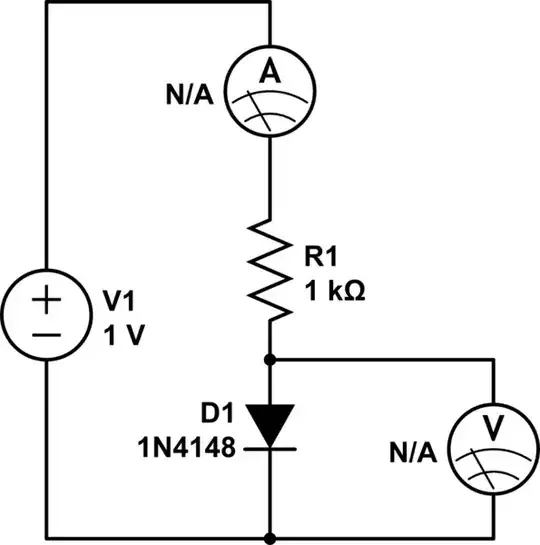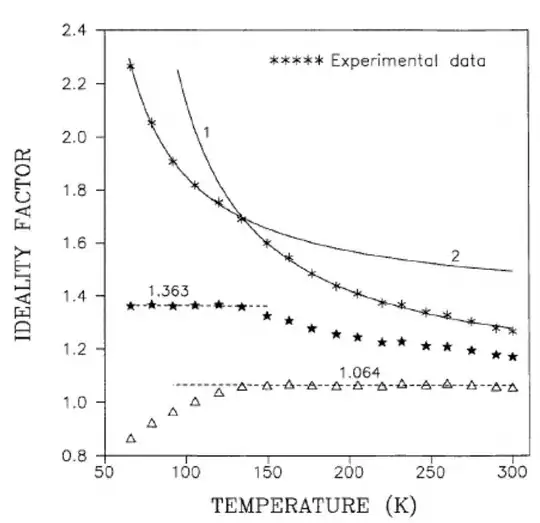Please forget the "why" for now, but I am attempting to determine the temperature of a 1N4148WS-E3 part by doing two measurements at different current setpoints. I've done some tests and some calculations and I don't understand where the error is coming from.
The theory
Derived from the Shockley diode equation, the following formula should give me the absolute temperature of the diode:
$$T=\frac{\Delta V_D}{\ln\left (\frac{1}{N}\right )}\cdot\frac{q}{n\cdot k}$$
Source: This video by Arda Yilmaz
Where:
- ΔVD: the difference between two measured voltages over the diode
- N: the ratio between the two measured currents corresponding to those voltages
- q: Charge of an electron, 1.602176634 × 10-19 coulomb
- k: Boltzmann constant, 1.380649 × 10-23
- n: ideality factor of the diode, this is 2.60607 according to Vishay
The measurement
I've measured voltage and current over/through this diode using two setpoints. The measurement data I got is:
- U1: 0.5819 V, I1: 582.8 µA
- U2: 0.4886 V, I2: 78.3 µA
To get this data, I used two multimeters, a 1 kΩ resistor in series with the diode and a lab voltage supply to set the setpoint. The current measurement is in series with the resistor, while the voltage measurement is directly over the diode.

simulate this circuit – Schematic created using CircuitLab
Feeding this into the formula, ΔVD is 0.0933 V and N is (78.3/582.8 =) 0.134351
This results is T = 207 K which is obviously incorrect. I'm expecting something close to room temperature.
Does anybody have any idea where this error is coming from?

Andyaka My first guess was 1.82 since that created usable results, but then I found the spice model.
SimonFitch I'm specifically testing with the same model from the same mfr as where the data is from.
Audioguru the SMD package is black and probably blocks all light.
All, I tried to convince my customer that he should use a 2N3906 instead but he cannot be convinced and prefers a backwards compatible worse solution.
– Graafvaag Mar 24 '23 at 08:53